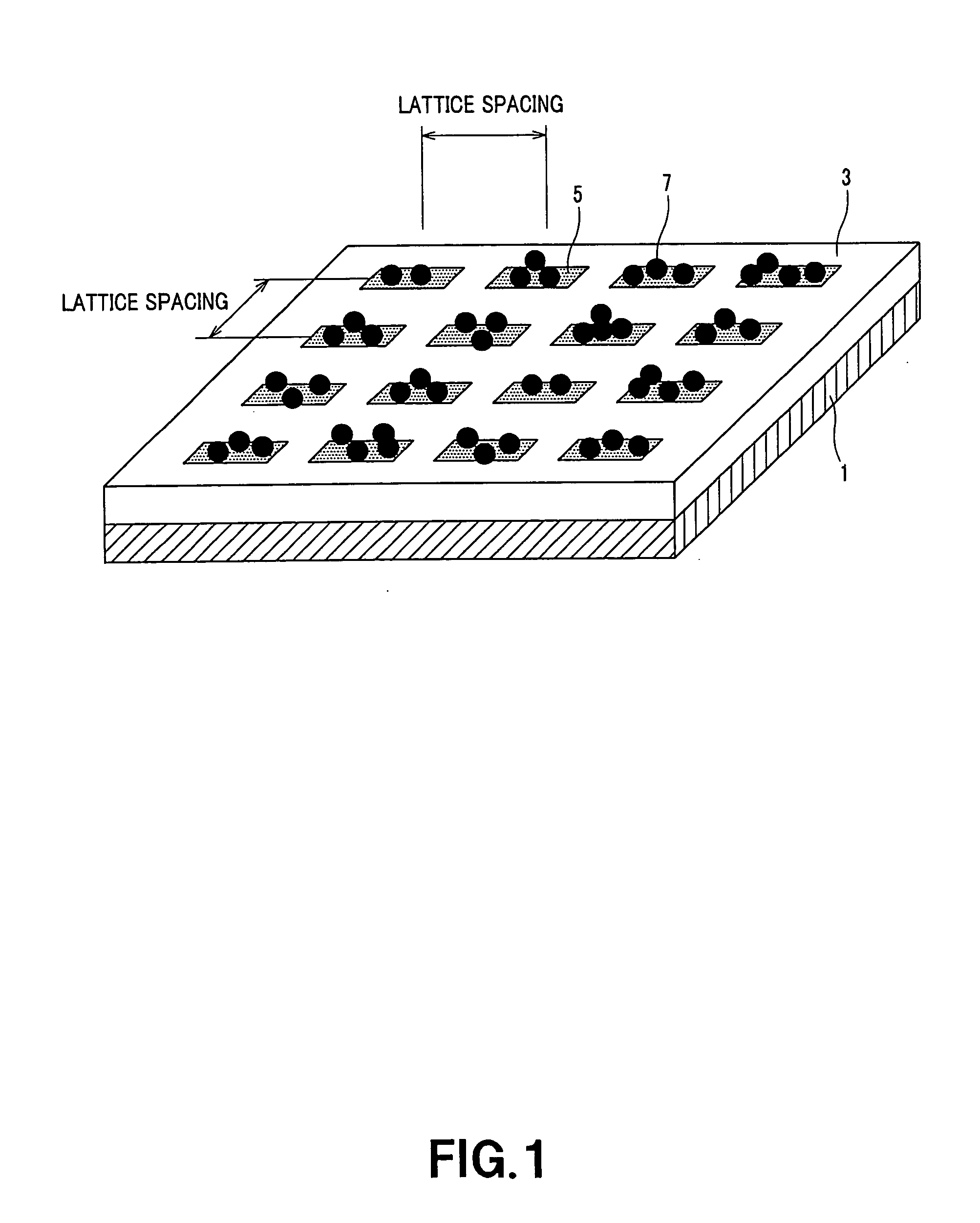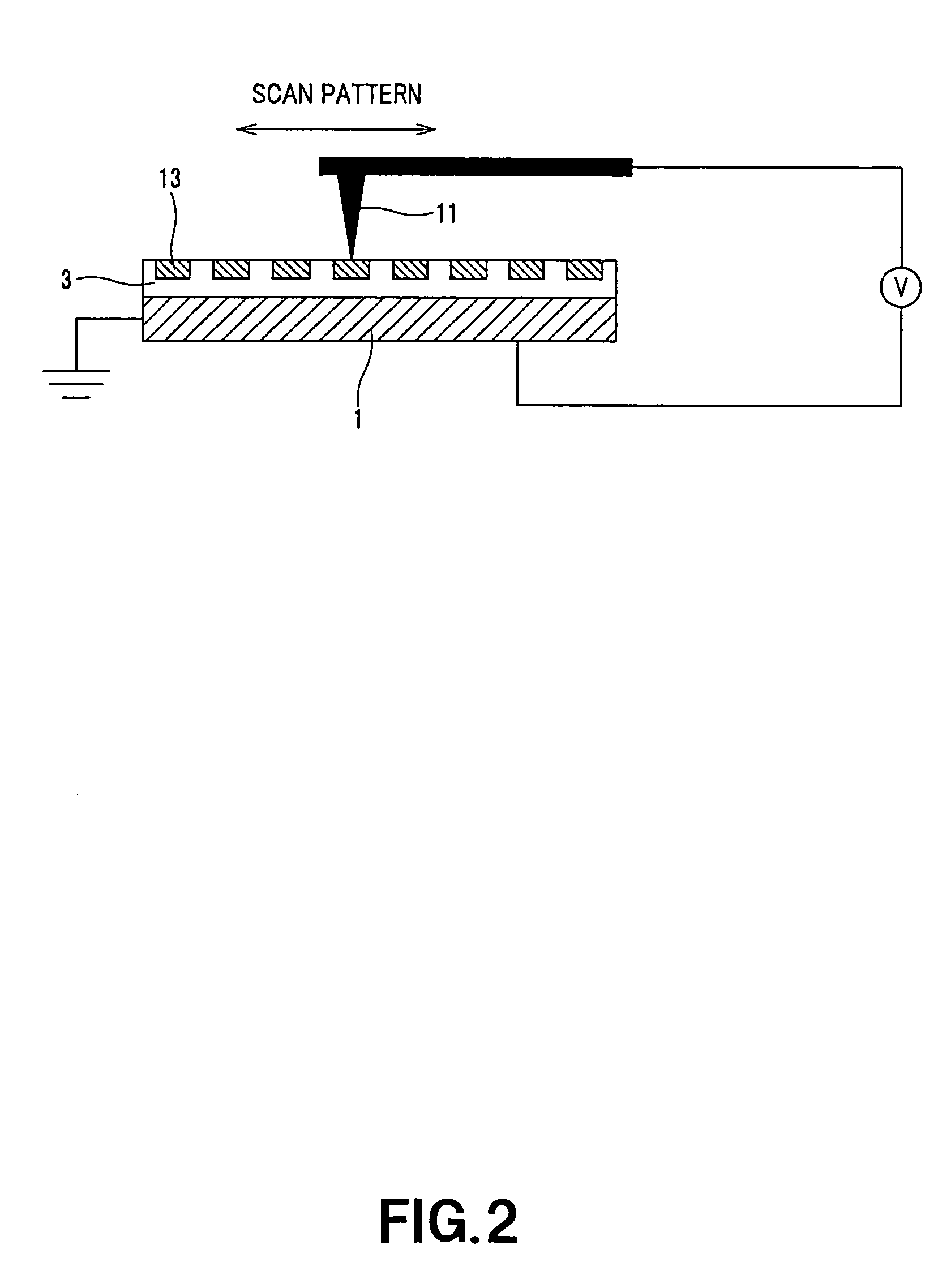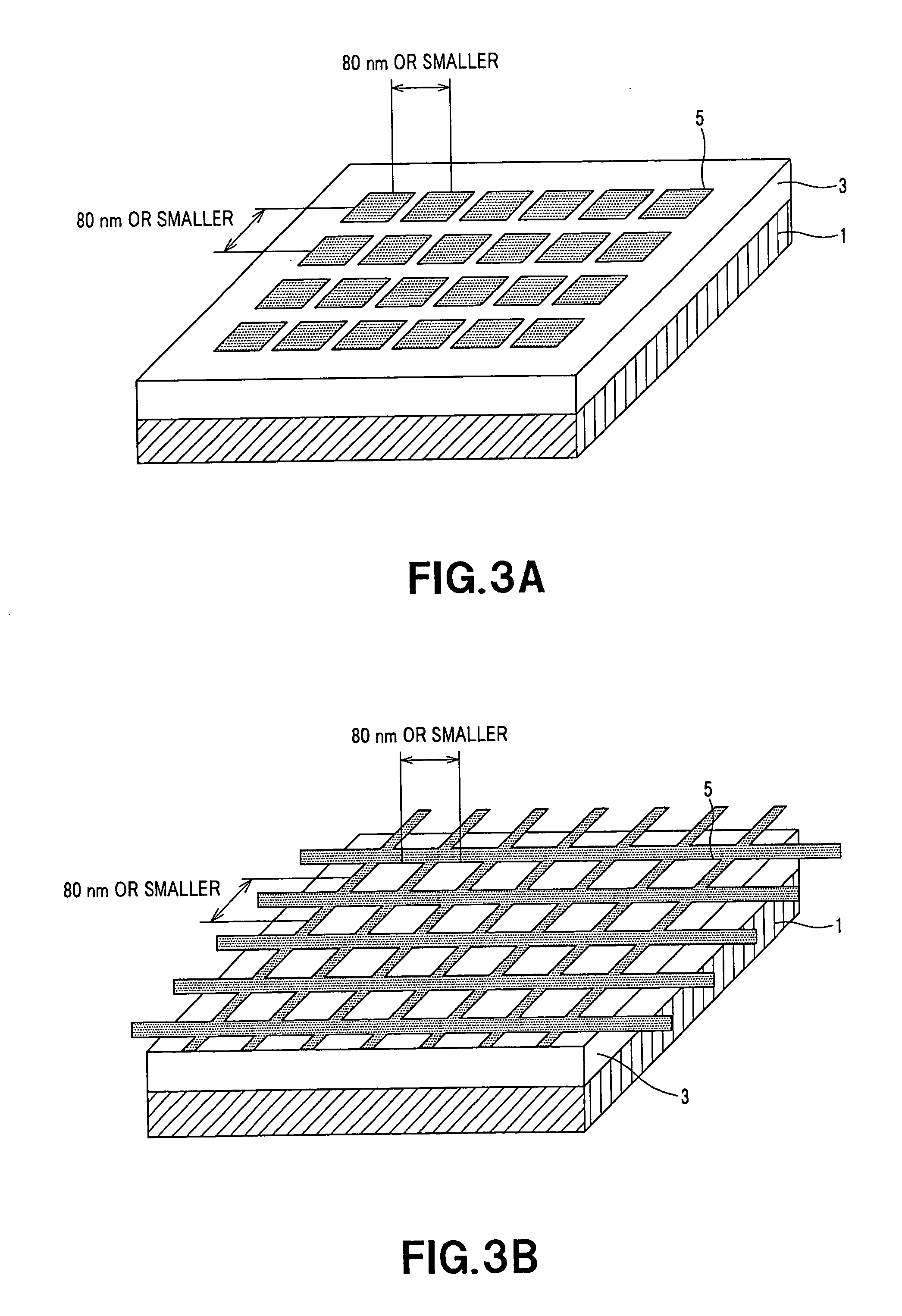Nanoparticle array and method for producing nanoparticle array and magnetic recording medium
a technology of nanoparticle arrays applied in the field of nanoparticle arrays and methods for producing nanoparticle arrays and magnetic recording mediums, can solve the problems of hardly practical use of techniques, hardly strict control of structure regularity, and high processing cost, so as to achieve efficient manufacturing and efficient formation
- Summary
- Abstract
- Description
- Claims
- Application Information
AI Technical Summary
Benefits of technology
Problems solved by technology
Method used
Image
Examples
example 1
As a board, a p-type Si wafer was used. As a silane compound formed on the board, octadecyl trichlorosilane (CH3(CH2)17SiCl3, OTS) was used. As magnetic nanoparticle dispersed solution, FePt nanoparticle dispersed solution (average particle diameter: 4.4 nm, solvent: hexane, an organic stabilizer: oleylamine) synthesized by applying a method disclosed by Sun et al. Science, 2000, v. 287, p. 1989 was used.
An OTS layer was formed on the board by immersing the board in toluene solution for a prescribed time. A surface patterning and oxidizing treatment was carried out in an atmospheric air by using a scanning probe microscope having a Pt coat probe (end radius of curvature: about 30 nm). As shown in FIG. 6A, the probe scanned at intervals of 70 nm in the direction of an X axis at scanning speed of 1.6 μm / s. As shown in FIG. 6B, when the probe moved in the direction of +Y axis, a positive voltage pulse (voltage: +9.5 V, pulse width: 20 ms, frequency: 25 Hz) was applied to the probe. ...
example 2
As a board, a p-type Si wafer was used. As a silane compound, an APS was used. As magnetic nanoparticle dispersed solution, FePt nanoparticle dispersed solution (average particle diameter: 4.4 nm, solvent: hexane, an organic stabilizer: oleylamine) synthesized by the same method as that of the Example 1 was used.
An APS layer was formed on the board by immersing the board in APS toluene solution for a prescribed time. A surface patterning and oxidizing treatment was carried out by using a scanning probe microscope having a Pt coat probe (end radius of curvature: about 30 nm). While a plurality of lines were traced on the surface of the APS layer, positive voltage of +9.25 V was applied to the probe. As a result of observing an AFM image and an LFM image on the surface of the organic layer after the surface patterning and oxidizing treatment, the AFM image hardly changed from that before the surface patterning and oxidizing treatment. On the other hand, in the LFM image, the format...
example 3
As a board, a thermally oxidized Si wafer (the thickness of an SiO2 layer is 3000 Å) was used. As a silane compound, an OTS was used. As magnetic nanoparticle dispersed solution, FePt nanoparticle dispersed solution (average particle diameter: 3.1 nm, solvent: hexane, an organic stabilizer: oleylamine) synthesized by the same method as that of the Example 1 was used.
An OTS layer was formed on the board by immersing the board in OTS toluene solution for a prescribed time. A surface patterning and oxidizing treatment was carried out by irradiating the surface of the OTS layer with corona (space between electrodes: 1.5 cm, discharge output of 100 W, processing speed: 0.4 mm / sec). When the board that was irradiated with corona was immersed in the FePt nanoparticle dispersed solution for a prescribed time, groups of FePt nanoparticles were selectively fixed only to areas irradiated with corona in single layers. Thus, a magnetic nanoparticle array could be manufactured, because CH3 gro...
PUM
| Property | Measurement | Unit |
|---|---|---|
| diameter | aaaaa | aaaaa |
| applied voltage | aaaaa | aaaaa |
| area | aaaaa | aaaaa |
Abstract
Description
Claims
Application Information
 Login to View More
Login to View More - R&D
- Intellectual Property
- Life Sciences
- Materials
- Tech Scout
- Unparalleled Data Quality
- Higher Quality Content
- 60% Fewer Hallucinations
Browse by: Latest US Patents, China's latest patents, Technical Efficacy Thesaurus, Application Domain, Technology Topic, Popular Technical Reports.
© 2025 PatSnap. All rights reserved.Legal|Privacy policy|Modern Slavery Act Transparency Statement|Sitemap|About US| Contact US: help@patsnap.com



